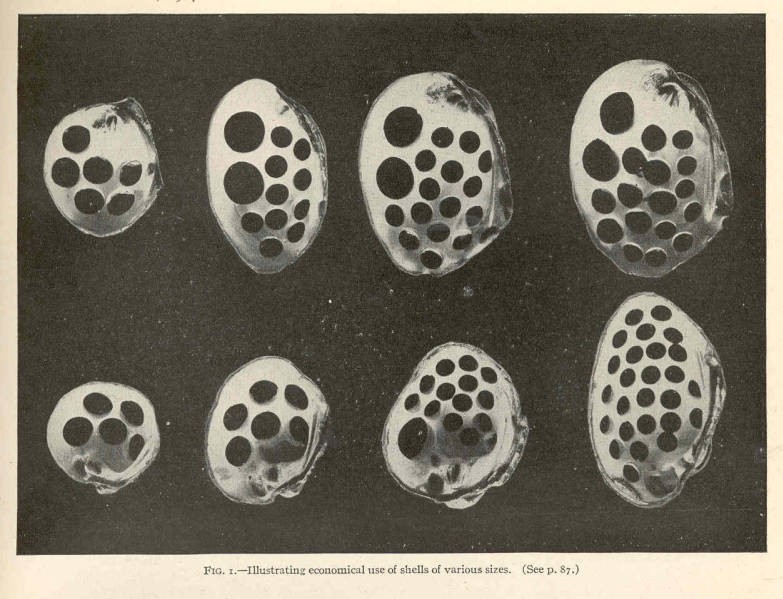Freshwater mussels are one of the coolest local animals you might not know about. Their reproductive quirks, importance to healthy streams, and threatened status make them worth your attention.
The Clean-Up Crew: Freshwater Mussels and Water Quality
Freshwater mussels improve the health of local rivers and streams by cleaning the water. As filter feeders, they extract food particles like plankton from the water and remove pollutants and debris at the same time. A single mature mussel can filter up to 20 gallons of water per day. When there is a healthy population of mussels, they form a powerful clean up crew in our local waterways.
Freshwater Mussels as Tricksters and Hitchhikers
Freshwater mussels have a sort of “foot” muscle that allows them to slowly move or bury themselves in the streambed, but otherwise, they aren’t big movers. To get around their limited mobility, mussels have a trick up their sleeves. Mussels use fish to move their young for them! But let’s take a step back and start at the beginning of mussel’s reproductive cycle.
As they filter the water, female mussels take in male mussel semen that fertilizers their eggs. Baby mussels, called glochidia, develop and hatch inside the female mussel’s shell. The mussel then puts out her lure, often resembling small fish or insects, to attract a fish. When a fish takes the bait and goes in for a bite, the mussel ejects a cloud of glochidia into the fish’s mouth. These glochidia then clomp down on the fish’s gills, where they live as parasites before dropping off as juveniles and settling into new sections of the stream.

The Most Threatened Animals in North America
Unfortunately, not all is well with freshwater mussels. They face a variety of stressors, mostly due to consequences of urbanization. Their challenges include:
- The button industry: In the 1800s, American freshwater mussels were overharvested for the mother-of-pearl button industry. Mussel populations in the Mississippi River Basin were almost exhausted, which caused the industry to collapse. Because mussels are slow growing and now deal with other challenges, they have yet to make a significant comeback.
- Water pollution: Mussels’ cleaning superpower is also their weakness. Filter feeding makes them vulnerable to water pollution. Our local streams (and the animals that live in them) are stressed by a variety of contaminants that run off the landscape, including road salt, lawn chemicals, and vehicle leaks. Juvenile mussels are especially vulnerable to contaminants in the water.
- Habitat loss: Stream modifications, such as channelization and dams, reduce suitable habitats for mussels, fish, and other aquatic species.
A combination of these factors makes freshwater mussels the most threatened group of animals in North America. In fact, 66% of North American freshwater mussel species are at risk.

Lending Mussels a Helping Hand: Local Efforts to Help Freshwater Mussels
On a positive note, there are ongoing efforts to improve water quality, restore stream habitat, and propagate freshwater mussels.
For instance, local watershed groups like the Lower Des Plaines Watershed Group, Lower DuPage River Watershed Coalition, and the DuPage River Salt Creek Workgroup are actively working to improve the health of rivers and streams. These groups partner with local agencies to carry out stream restoration projects, such as dam removal. In some cases, a dam can completely separate mussels from their fish hosts, so dam removal can reconnect them and be a boon to mussel populations. Two recent dam removals include Fullersburg Woods Dam on Salt Creek and Hammel Woods Dam on the DuPage River mainstem.
Only 0.00001% of mussel glochidia make it to adulthood. From finding the right fish host to surviving water pollution as juveniles, there are a combination of factors that need to be just right for mussels to reach maturity. Propagating mussels in a lab can remove many of those variables. At the Forest Preserve District of DuPage County’s Urban Stream Research Center (USRC), mussel propagation increases the survival rate of mussel glochidia to 25-50%! The ecologists at USRC give freshwater mussels a helping hand by reinforcing wild freshwater mussel populations to help them recover faster from the effects of urbanization.

How You Can Help Freshwater Mussels
While mussels are slowly making a comeback, they still face challenges from our urban-suburban way of life. Here’s how you can help local streams and the freshwater mussels that live there:
- Reduce or eliminate the use of lawn chemicals: Excess lawn fertilizer is washed into storms drains and into streams. The same nutrients that fertilize our lawns also fertilize algae in local waterways, which can create an unhealthy environment for aquatic animals and people. So, reduce fertilizer use or try out natural lawn care practices.
- Be Salt Smart: Prevent our freshwater streams from turning salty. Shovel first and then use only the amount of winter salt needed to melt snow and ice to keep us safe and protect freshwater. You need much less salt than you would think!
- Keep your vehicles in good shape: Regularly inspect and maintain your vehicle to prevent fluid leaks that can contaminate waterways.
- Correctly dispose of household chemicals: Chemicals should not be poured down the household drain or into a storm drain on the street. Properly dispose of Household Hazardous Waste at a designated drop-off site.
- Install a native plant garden: Soak up rainwater with native flowers, shrubs, and trees. Native gardens reduce stormwater runoff and help birds, bees, and butterflies at the same time!
- Get a rain barrel: Rain barrels are another way to reduce stormwater runoff. Use water captured by rain barrels to water your garden.
- Participate in river clean-ups: Volunteer a morning to clean up litter in and along your local stream. Removing trash makes healthier habitat for wildlife.
By taking these simple steps, we can contribute to the recovery and conservation of these critical freshwater species.




